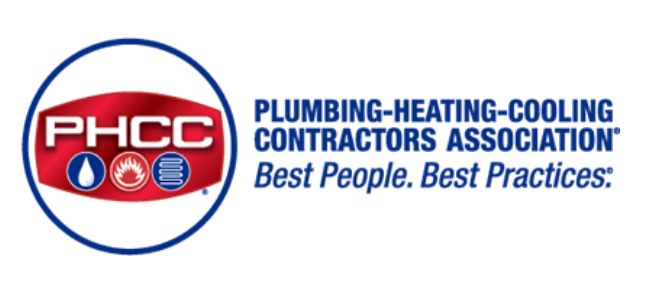Relative humidity is the density of water vapor in an area and takes into account the temperature of that area. The relative humidity in your home should be between 35% and 50%. If you’re struggling to maintain a safe and comfortable level of relative humidity in your home, whole-home humidifiers and whole-home dehumidifiers can simplify the process. Comparing the two will help you decide which is the better option for your home. In some cases, investing in both units is beneficial.
Considering Local Climate
The weather and climate in Sterling, VA can vary quite a bit over the year, including the humidity, which can vary greatly depending on the weather. The humidity levels in your home can also be affected by actions like bathing, cleaning, and cooking. If you aren’t using proper ventilation, relative humidity levels can rise quickly.
This is a scenario when both a whole-home dehumidifier and a whole-home humidifier may be necessary. There may be days when one unit will need to run. Days later, the other unit will be necessary.
About Whole-Home Units
Both humidifiers and dehumidifiers are sold in stores as portable models. You simply plug these units in and move them from one room to another. While this is convenient, you aren’t addressing the humidity of your home as a whole. Installing whole-house units will remove or add moisture to all the air passing through your HVAC system while it runs. You don’t have to worry about moving your unit from one room to another. Whole-house humidity control also requires minimal maintenance.
Whole-Home Humidifiers
If the relative humidity of your home is less than 35%, you may experience dry and irritated sinuses. This can cause an increase in illness and infections. Your skin and hair may feel dry as well. You could also experience static electricity as you move from room to room. You can add small amounts of moisture back into your air, increasing the overall comfort and function of your residence. You control your whole-home humidifier using your thermostat, which also provides real-time humidity data.
Whole-Home Dehumidifiers
It’s incredibly important that you don’t allow humidity levels to rise above 50% in your home. High levels of humidity can make your home feel very uncomfortable. It can even feel like it’s hard to breathe if it’s hot in your home and humidity is climbing. In some instances, your home may be overly humid in the winter as well. If you’re doing a lot of cooking or cleaning, humidity quickly rises. You have exhaust fans in your bathrooms and kitchen that help expel some of that humid air to the outside. Make sure that you’re running them when necessary.
A whole-home dehumidifier can remove moisture from your indoor air as it passes through your HVAC system. The collected moisture will run through a condensate drain. You don’t have to worry about emptying any kind of collection tank; just check periodically that your drain line doesn’t appear to be clogged with mineral deposits or debris.
Choosing a Whole-Home Humidity Control Device
If you’ve decided that you want to invest in a whole-home dehumidifier, whole-home humidifier, or both, there are some things to consider when choosing your unit. First, think about the square footage of your home. Equipment that is too large for your home will be inefficient and simply drive up your energy bills. A unit that is too small will make it hard to manage your indoor humidity, and not only will that lead to reduced comfort but also could strain the system unnecessarily. The unit will have to work harder to keep the indoor humidity levels at a safe and healthy level.
Using a hygrometer, you can check the levels of humidity in different rooms of your home. You will want to check these levels at different times of the day and year. The data you collect will determine whether you need to remove moisture, add it back in, or both, depending on the conditions in your residence.
Scheduling Routine Maintenance
Your humidity control devices should be inspected once per year. This inspection can be added to your routine HVAC appointment for convenience. Certain maintenance tasks may be needed at this appointment. This includes cleaning the drain line for your equipment to ensure proper water flow. If water is pooling up near your HVAC system, this can cause corrosion and even mold growth.
There may be filters that need to be changed every few months. We will also inspect your water line, ensuring that it is functioning properly.
Inspecting the exterior of your equipment as well as interior components can alert our team to any issues that may be occurring. We can make any necessary repairs to protect the integrity of your humidity control equipment. We will also check your humidistat to ensure it provides accurate readings. If the readings are inaccurate, this could cause the wrong equipment to turn on, preventing proper humidity control.
There is an evaporator pad that many types of dehumidifiers use. This pad should be changed every one to three months. We can inspect your pad and let you know how often to change it.
Benefits of Whole-Home Humidity Control
We’ve touched on the importance of controlling indoor humidity. Whole-home equipment can help you achieve the desired levels of relative humidity between 35% and 50%. This will make your home feel more comfortable. It can also improve your indoor air quality. Very humid air can hold onto larger particulate matter. As this material circulates through your indoor air, it can lead to an increase in allergies, asthma attacks, and respiratory issues. As mentioned, dry air can be very irritating to your body as well.
If humidity levels in your home are too high or low, this can cause you to run your HVAC system more frequently, making your home feel warmer or cooler. When you run your HVAC system less, this results in less energy consumption and lower utility bills.
Ideal humidity levels in your home can protect your furnishings, flooring, and fixtures. If humidity levels are rising and falling frequently, this can cause wood flooring to expand and contract often, leading to warping and other damage that is difficult to fix.
If you would like to learn more about using a whole-home dehumidifier or humidifier, Meade’s Heating and Air can provide you with more information. We also install, repair, and provide routine maintenance for different types of heating and cooling systems. In addition to controlling humidity, our indoor air quality services include UV air sanitation, whole-house filtration equipment, and more. We can service your water heater, perform air duct sealing, clean your ducts, and work on gas lines.
Contact Meade’s Heating and Air in Sterling to schedule an appointment with one of our team experts.




